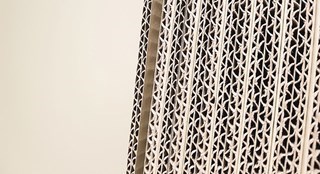Corrugated
Forecast: Corrugated packaging market to increase
Published
6 years agoon
By
BXP Reader
The corrugated packaging market is set to grow from around $315 million in 2017 to more than $380 million by 2023, as trends such as e-commerce, digital print and sustainability drive ongoing growth, according to a new market study from Smithers Pira.
Overall, demand is likely to increase by around 3.5 percent to 4 percent annually over the medium term, reaching a total of about 181 million tons by 2023, worth over $380 billion at 2017 prices, according to The Future of Corrugated Packaging to 2023.
Actual consumption of corrugated board packaging by end users totaled an estimated 145 million tons in 2017, worth almost $315 billion to converters. Growth rates had dropped from over 7 percent annually between 2009 and 2010, as the industry came out of the global recession, to just 3.4 percent per annum on average from 2011 to 2017.
Two technologies are having a marked impact on the market, in the form of e-commerce and digital printing. The nature of e-commerce packaging favors the use of corrugated board as a major medium and it is now estimated that upwards of $20 billion worth of corrugated materials are used in this sector as a whole. The major sectors making use of e-sales systems include consumer electronics, books and media products, fashion, and toys, hobby, and sports equipment.
Not unrelated to this trend is the growing adoption of digital printing in corrugated applications. The flexibility of run lengths, savings in set-up costs, the ability to personalize either relating to brands, regions, stores or individuals, and the level of quality now available through the latest technologies all combine to create a ‘perfect storm’ of growth opportunities for converters and printers.
Conversely, the advent of e-commerce, especially in the grocery sector, is likely to have a slight negative impact on retail-ready packaging (RRP) usage, as e-sales do not require any RRP systems. Furthermore, the innovation in e-commerce systems – such as subscription box services and meal kits that offer direct-to-consumer delivery of specialist food using a weekly or monthly subscription model – will have an additional, though slight, impact on the RRP market.
AdvertisementThe sustainability of corrugated board as a packaging medium improves its prospects in competing with alternative materials. The growing influence of “Millennials” and “Centennials” as a marketing cohort with very distinct demand for environmental protection, such as an indication that 85 percent of them in Europe would pay 12 percent more for sustainably packaged goods (DS Smith research), will no doubt contribute to the success of corrugated packaging over the medium term.
However, the restrictions that China has imposed on the importation of waste materials from January 2018 are likely to hamper the recycling industry over the short term, with new standards that restrict the contamination rates.
The most important influences on corrugated demand originate among end users, be they retailers, brand owners, marketers or consumers themselves. These myriad factors vary from one market sector to the next, and include many demographic factors such as ageing populations affecting healthcare markets, urbanization driving demand for processed foods and household appliances, to bulk handling systems in industrial applications such as chemicals.
These factors at the end-user level combine to produce a mixed bag of growth opportunities for each market in each region, overall providing the growth prospects for the whole industry.
The data and analysis in The Future of Corrugated Packaging to 2023 is the combination of extensive primary and secondary research moderated through a Delphi Technique. A comprehensive primary research program of telephone interviews spanning the whole global value chain for corrugated board was conducted. This was supported with the output of in-depth secondary research of mill and converter outputs, company reports, trade statistics, conference presentations, press releases and trade press. The two are combined in The Future of Corrugated Packaging to 2023 in expert analysis and over 350 easy-to-reference tables. Click the link provided for more information on this new market study: https://www.smitherspira.com/industry-market-reports/packaging/corrugated-packaging-to-2023
Editorial Note: This post was shared by a member of the Brand Experience magazine community using our Community Voice tool.
AdvertisementOur website community uses the tool to post articles, thought-leadership reports and analyses, white papers, case studies, blog entries and op-eds, press releases and events about branding, design or marketing. These posts are vetted and edited by our editorial staff for editorial relevance for branding, design and marketing professionals. Approved and edited content then lives side-by-side with other editorial content.
Do you want to become a contributing author to the BXP website? Click here to learn how you can become a contributing member of the BXP Magazine community.

SPONSORED VIDEO
Branding with Ferocity – Thinking Like an Indie Brand
Get a better understanding on how to leverage new technologies to engage and delight shoppers, sustainability’s role in product and package design – being sustainable and premium are not mutually exclusive, plus best practices and tips for collaboration and how to launch new products and refresh existing product line-ups and brands.
You may like
Advertisement
Subscribe

BULLETINS
Get the most important news and business
ideas from BXP Magazine's news bulletin.
Advertisement







